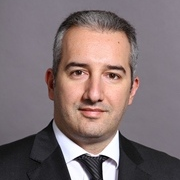Spine Intervention—an Update on Injectable Biomaterials
A special issue of Medicina (ISSN 1648-9144).
Deadline for manuscript submissions: closed (8 August 2022) | Viewed by 3570
Special Issue Editors
Interests: imaging; computed tomography; magnetic resonance; medical imaging; pain management; diagnostic radiology; diagnostic imaging; ultrasound imaging; hepatocellular carcinoma; ultrasonography; liver cancer imaging; interventional radiology; musculoskeletal imaging; spine; low back pain; back pain; neuroradiology; musculoskeletal sonography; elastography; spine research; rfa; intervertebral disk; interventional pain management; bone tumours; infiltration; ablation techniques; vertebroplasty; osteoid osteoma; osteoplasty
Special Issues, Collections and Topics in MDPI journals
Interests: interventional oncology; ablation; vertebral augmentation; MSK interventions
Special Issues, Collections and Topics in MDPI journals
Special Issue Information
Indications for percutaneous, minimally invasive techniques in the spine using injectable materials include, among others, treatment of vertebral fractures and back pain related to intervertebral discs, facet or sacroiliac joints, as well as post-traumatic regeneration of the spinal cord. The purpose of this Special Issue is to provide an inside view of different injectable biomaterials used for the treatment of spinal pathologies and to provide an introduction to the basic concepts and advancements in the field.
This Special Issue welcomes original articles presenting experimental and clinical studies as well as reviews of the literature describing the current state of the art.
Potential topics include but are not limited to:
Injectable biomaterials for vertebral fractures;
Injectable biomaterials for intervertebral disc degeneration/herniation;
Injectable biomaterials for facet joints pathology;
Injectable biomaterials for sacroiliac joints pathology;
Injectable biomaterials for the treatment of pain generators;
Injectable scaffold systems for the regeneration of the spinal cord
Prof. Dr. Alexis Kelekis
Dr. Dimitrios Filippiadis
Guest Editors
Manuscript Submission Information
Manuscripts should be submitted online at www.mdpi.com by registering and logging in to this website. Once you are registered, click here to go to the submission form. Manuscripts can be submitted until the deadline. All submissions that pass pre-check are peer-reviewed. Accepted papers will be published continuously in the journal (as soon as accepted) and will be listed together on the special issue website. Research articles, review articles as well as short communications are invited. For planned papers, a title and short abstract (about 100 words) can be sent to the Editorial Office for announcement on this website.
Submitted manuscripts should not have been published previously, nor be under consideration for publication elsewhere (except conference proceedings papers). All manuscripts are thoroughly refereed through a single-blind peer-review process. A guide for authors and other relevant information for submission of manuscripts is available on the Instructions for Authors page. Medicina is an international peer-reviewed open access monthly journal published by MDPI.
Please visit the Instructions for Authors page before submitting a manuscript. The Article Processing Charge (APC) for publication in this open access journal is 1800 CHF (Swiss Francs). Submitted papers should be well formatted and use good English. Authors may use MDPI's English editing service prior to publication or during author revisions.
Keywords
- injectable
- biomaterials
- spine
- vertebral fractures
- intervertebral disc
- facet joints
- spinal cord
- regeneration
- hernia
- sacroiliac joints







